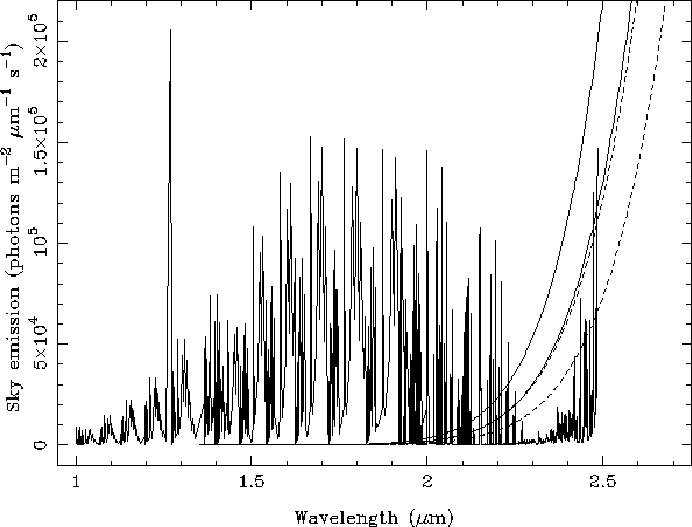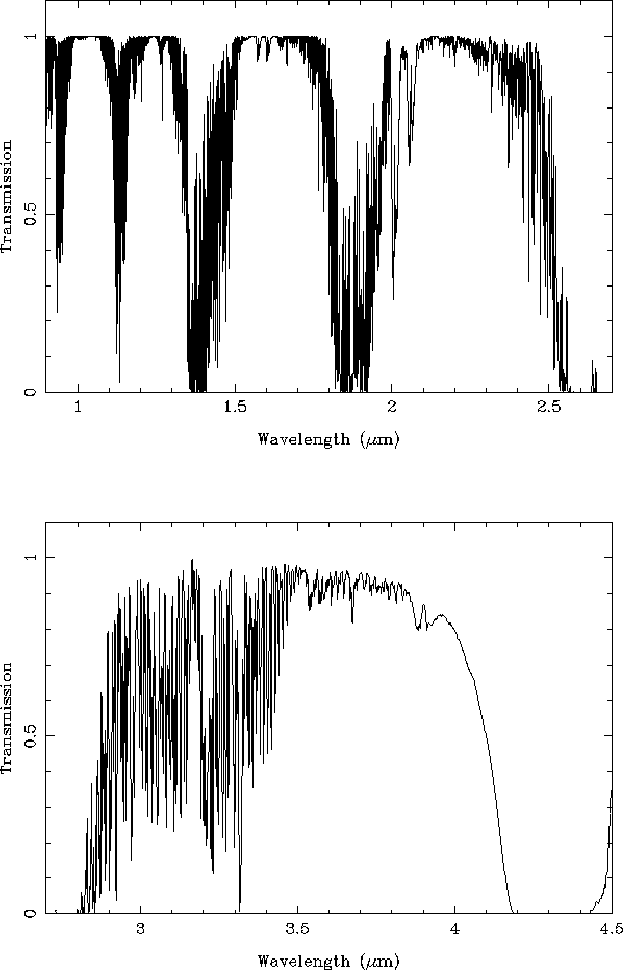
Figure: Calculated sky emission for winter (T = 278 K) under dry conditions between 1 and 2.5
The extinction at J, H and K was estimated from observations of standard stars at about 0.10, 0.11 and 0.07 mag/airmass, respectively, but these values are likely to vary from night to night, and the best solution is to monitor a few standards throughout the night, over the same range in air mass as your objects. A model of the sky emission together with a representation of telescope emission is shown in Figure 6, while an atmospheric transmission spectrum is shown in Figure 7. The winter and summer sky brightnesses are given in Table 5.3.

Figure: Calculated sky emission for winter (T = 278 K) under dry conditions
between 1 and 2.5 ![]() m. The strong airglow emission lines dominate the
spectrum shortwards of 2.3
m. The strong airglow emission lines dominate the
spectrum shortwards of 2.3 ![]() m, where thermal emission from the sky starts
to become apparent. However, emission from the telescope increases rapidly
beyond 2.2
m, where thermal emission from the sky starts
to become apparent. However, emission from the telescope increases rapidly
beyond 2.2 ![]() m and dominates the background. The dotted and dashed curves
represent the emission from a 20% emissive telescope at 285 and 275 K
respectively.
m and dominates the background. The dotted and dashed curves
represent the emission from a 20% emissive telescope at 285 and 275 K
respectively.

Figure 7: Calculated sky transmission spectrum for La Palma.